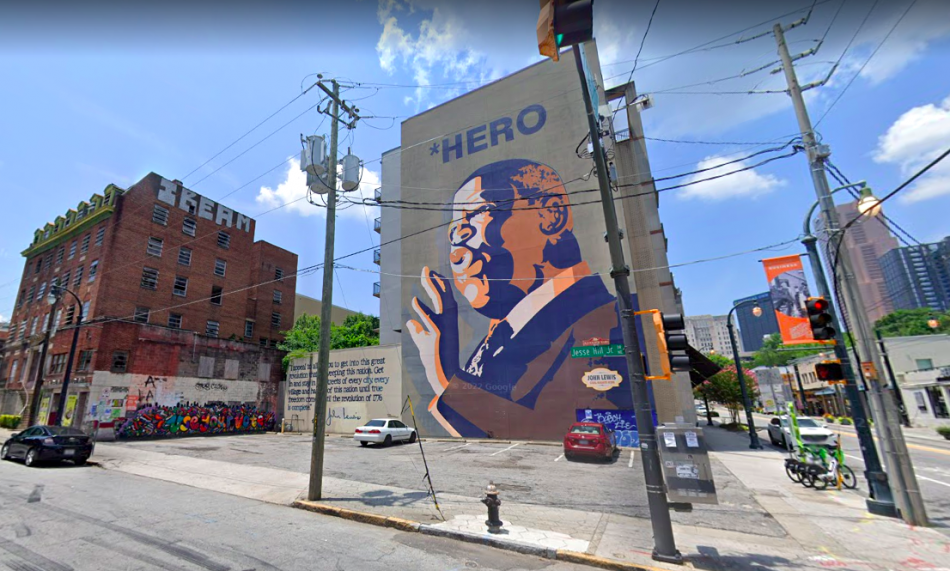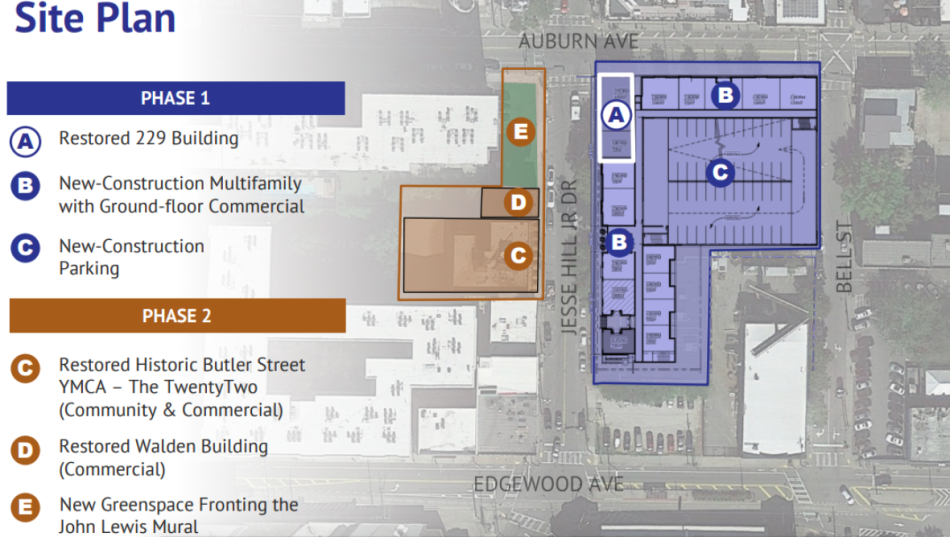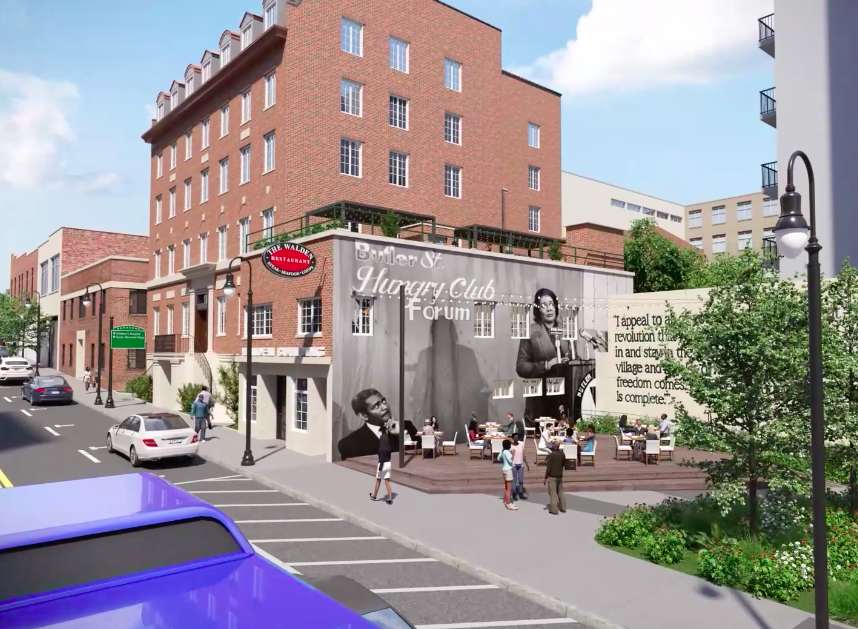The timeline for when two corners at a historic Sweet Auburn intersection might be transformed with new investment and street life is coming into clearer focus.
The two-phase development led by Gorman and Company, a Wisconsin-based developer with expertise in building affordable housing, aims to enliven what’s currently a dead zone of boarded-up, historically significant buildings and surface parking lots.
The corners in question are located on the southwest and southeast sides of where Auburn Avenue meets Jesse Hill Jr. Drive.
The properties made news last week when the Invest Atlanta Board of Directors approved a Housing Opportunity Bond up to $3 million to help move construction forward. Collectively, however, both phases of Sweet Auburn Grande, as the project’s now called, are expected to cost north of $74 million.
Joel Reed, Gorman’s Southeast market president, provided Urbanize Atlanta with an outlook this week—both near-term and not—for when Atlantans might start to see that section of Sweet Auburn brought back to life.
 The current parking lot and building conditions at the corner of Jesse Hill Jr. Drive and Auburn Avenue, beneath the 65-foot Lewis mural. Google Maps
The current parking lot and building conditions at the corner of Jesse Hill Jr. Drive and Auburn Avenue, beneath the 65-foot Lewis mural. Google Maps
 Breakdown of two development phases on either side of Jesse Hill Jr. Drive. Gorman & Compay; via SR, 2023
Breakdown of two development phases on either side of Jesse Hill Jr. Drive. Gorman & Compay; via SR, 2023
For phase one, revised Sweet Auburn Grande plans call for building 109 multifamily residences along Auburn Avenue, located at the southeast corner of the Jesse Hill Jr. Drive intersection. Roughly 11,500 square feet of commercial space at street level would also be included.
According to Reed, that phase is scheduled to start construction in late July and cost roughly $56 million, barring increases due to inflation and supply and demand.
As of now, the apartments and retail are expected to open in July 2026, following two years of building.
The residential component will include 57 units—or more than half—reserved for tenants earning 50 percent of the area median income or less, according to Invest Atlanta.
 The revised vision for Sweet Auburn Grande phase one, with the early 1900s office building preserved. Gorman & Company, via Invest Atlanta
The revised vision for Sweet Auburn Grande phase one, with the early 1900s office building preserved. Gorman & Company, via Invest Atlanta
The project would also incorporate—as opposed to demolish, as earlier plans had called for—the historic but long-vacant 229 Auburn building (Atlanta Life Insurance Building). That ailing structure dates to the early 1900s and once housed pioneering Black businesses, including Georgia’s first state-chartered Black bank, during the district’s heyday.
Meanwhile, across the street, the project’s second phase calls for restoring two more historic structures—the 1920 former Butler Street YMCA-JD Winston Branch and the Walden Building—while adding an attractive public greenspace at the corner, at the base of the iconic John Lewis HERO Mural.
The Butler Street Community Development Corporation, which owns the 219 Auburn Avenue property that’s currently a parking lot, rechristened the corner “Good Trouble John Lewis Memorial Park” in 2022.
 Beside the greenspace, plans have called for outdoor workstations and free Wi-Fi. Central Atlanta Progress/Invest Atlanta/SCAD
Beside the greenspace, plans have called for outdoor workstations and free Wi-Fi. Central Atlanta Progress/Invest Atlanta/SCAD
Reed said the timeline for phase two isn’t as clear, as details that include financing are still being ironed out. Development costs are expected to come in around $18 million, but restoration work on the former YMCA building would have different funding sources.
"Since [phase two] is heavily focused on programming of the building with community facing and serving end users, the capital stack and financing are more complex,” Reed wrote via email. “We’re working on finalizing our capital stack for [phase two], and if we’re able to sort out our financial needs, we could expect a late 2025 start on that phase of the project,” though he noted that starting the project might not mean onsite construction would launch then.
Elsewhere in Atlanta, Gorman recently celebrated the completion of Residences at Westview, a 60-unit affordable housing complex near Westview Cemetery. Development officials said during that project’s ribbon-cutting last month they expect to deliver 350 new housing units across Atlanta over the next two years.
Head up to the gallery for more context and imagery pertaining to the Sweet Auburn vision.
...
Follow us on social media:
Twitter / Facebook/and now: Instagram
• Sweet Auburn news, discussion (Urbanize Atlanta)







